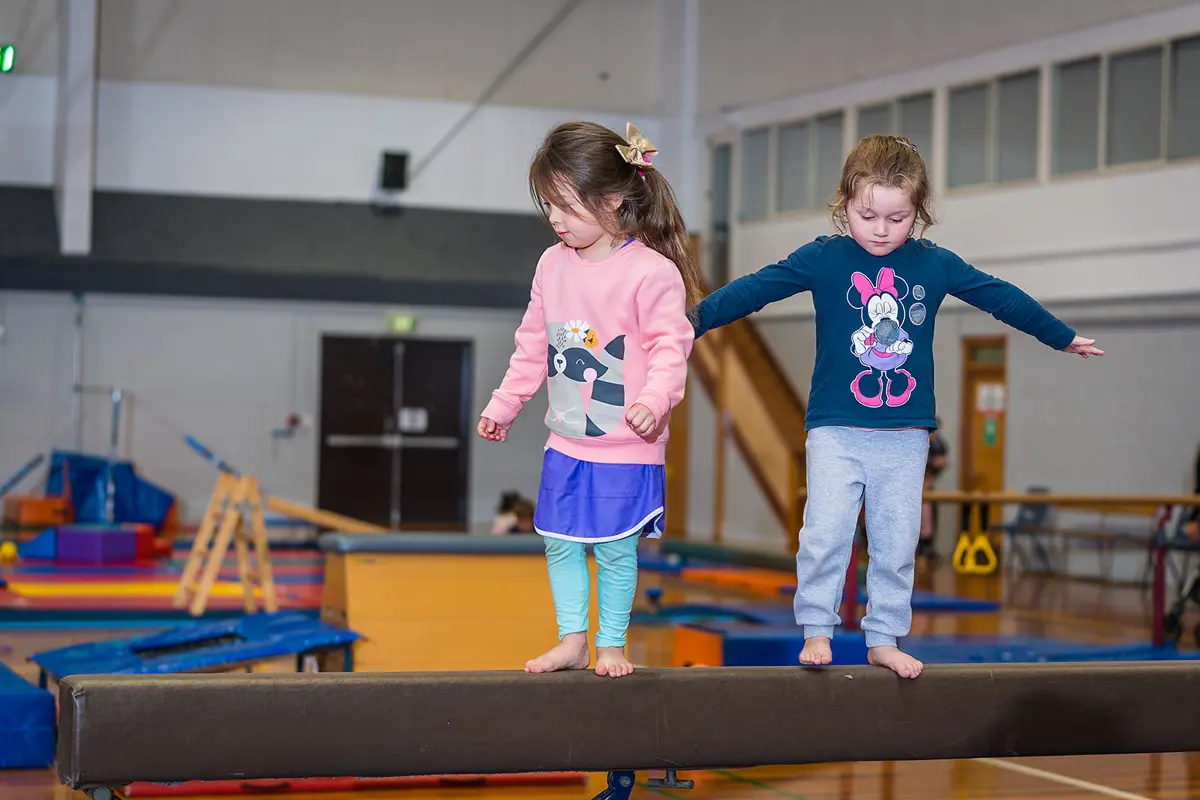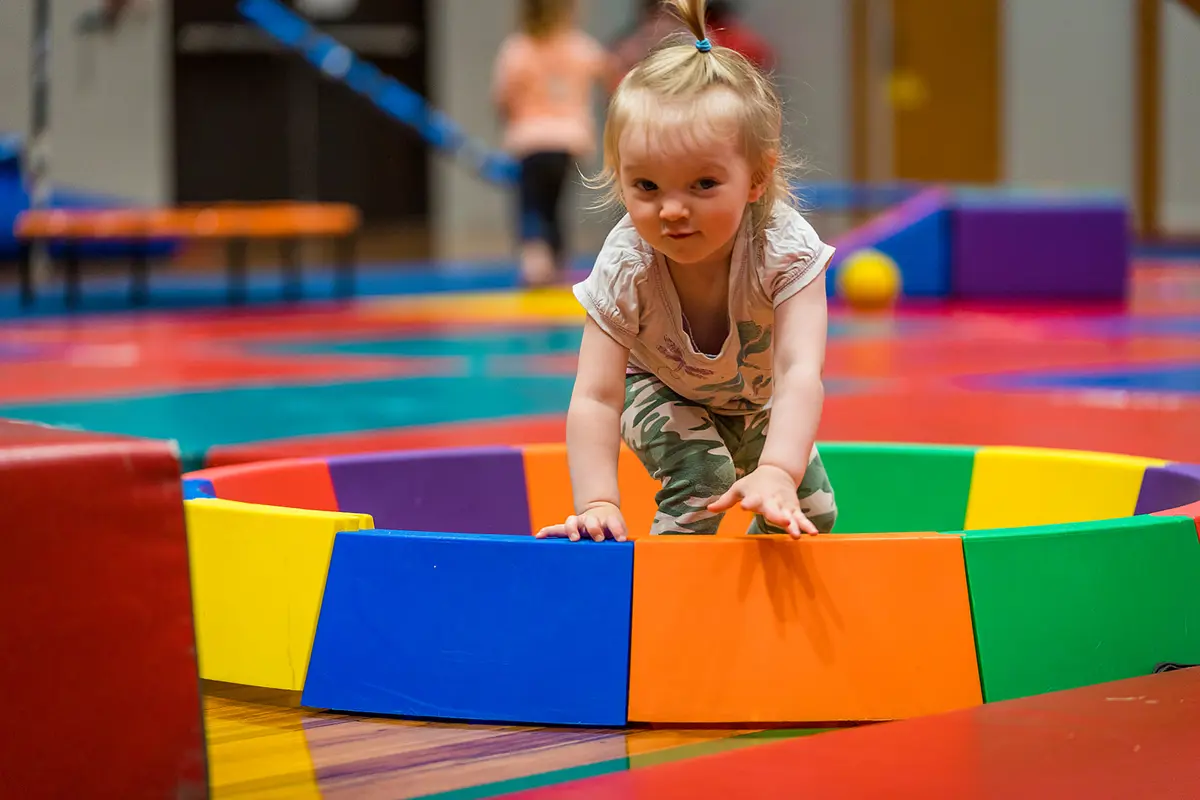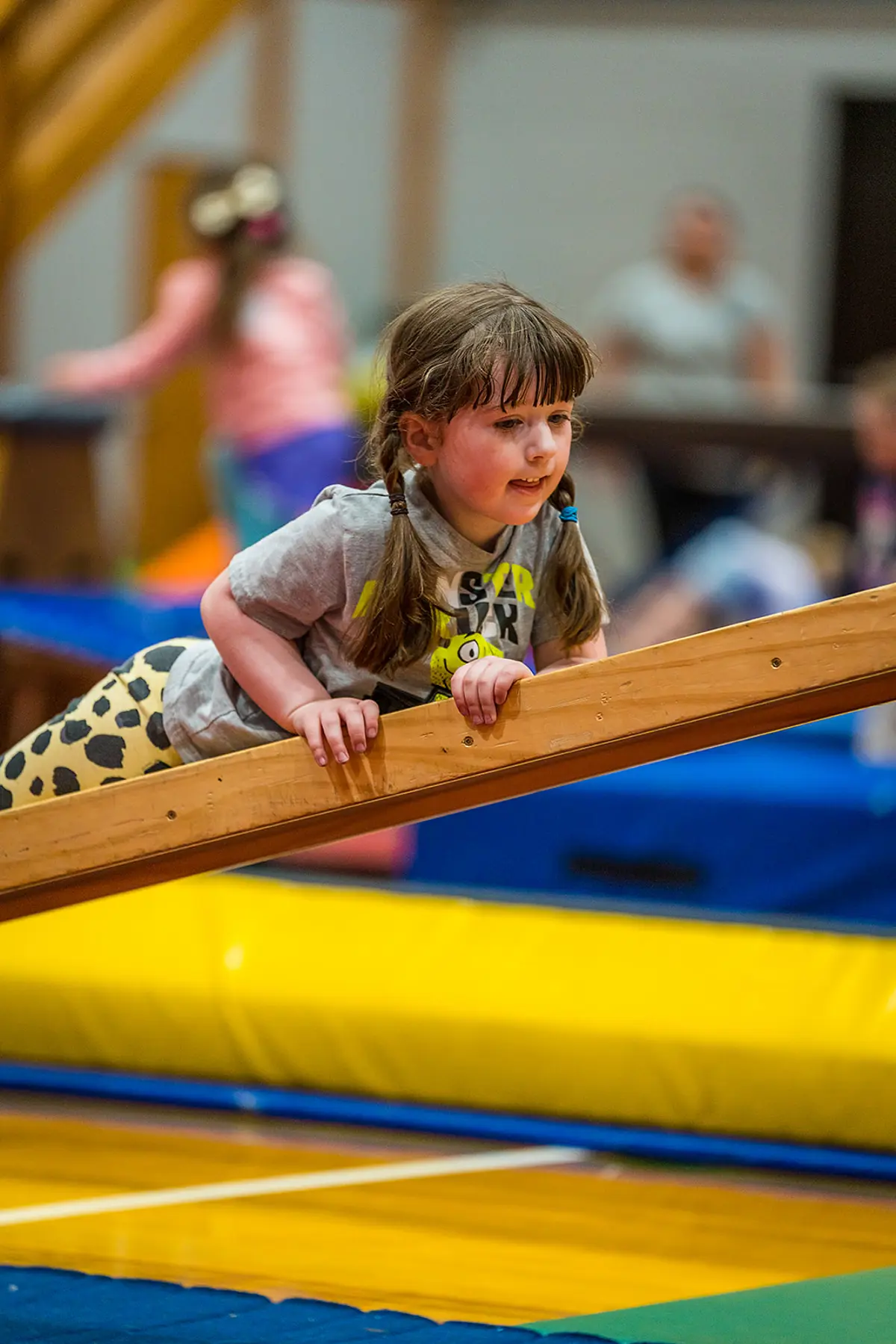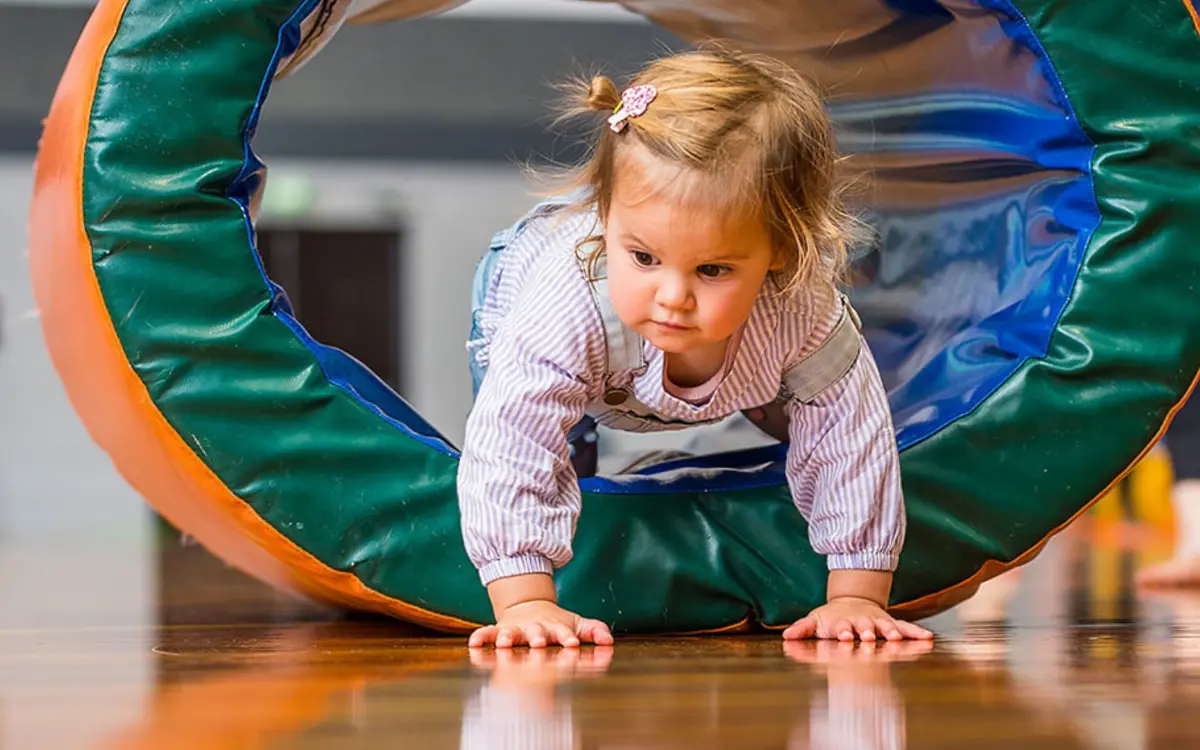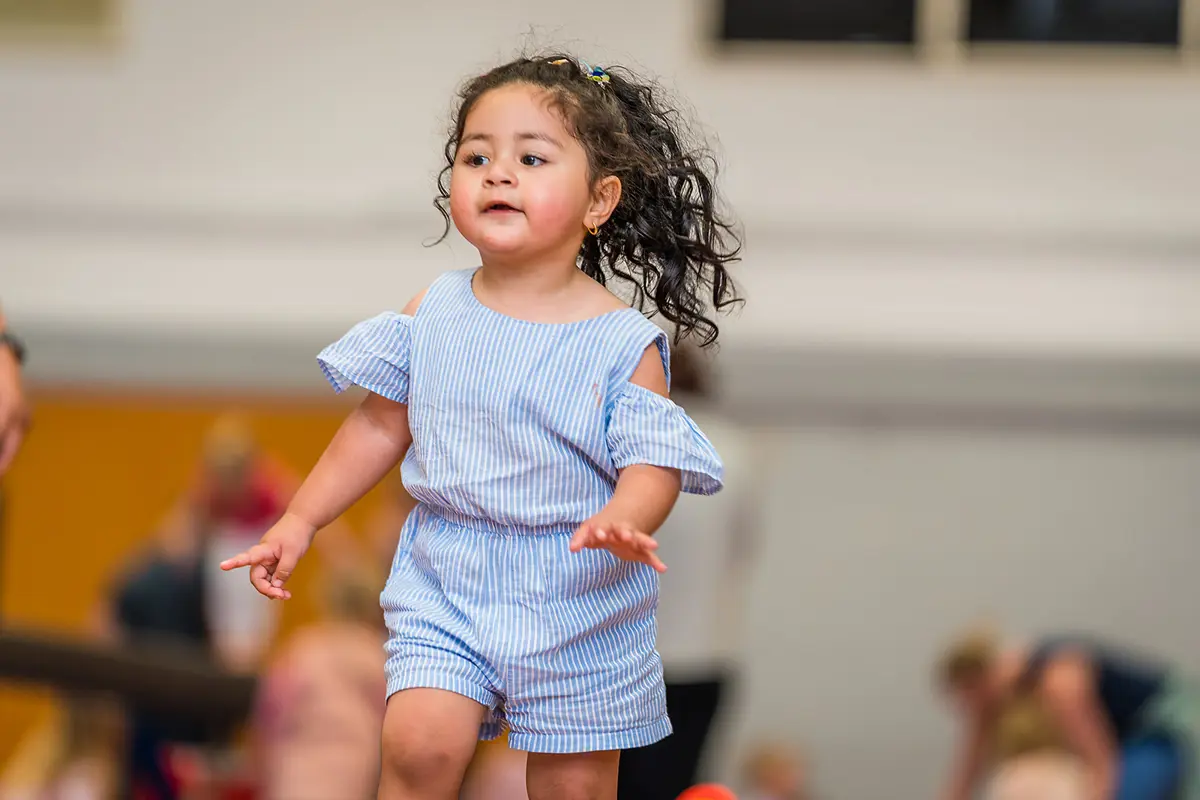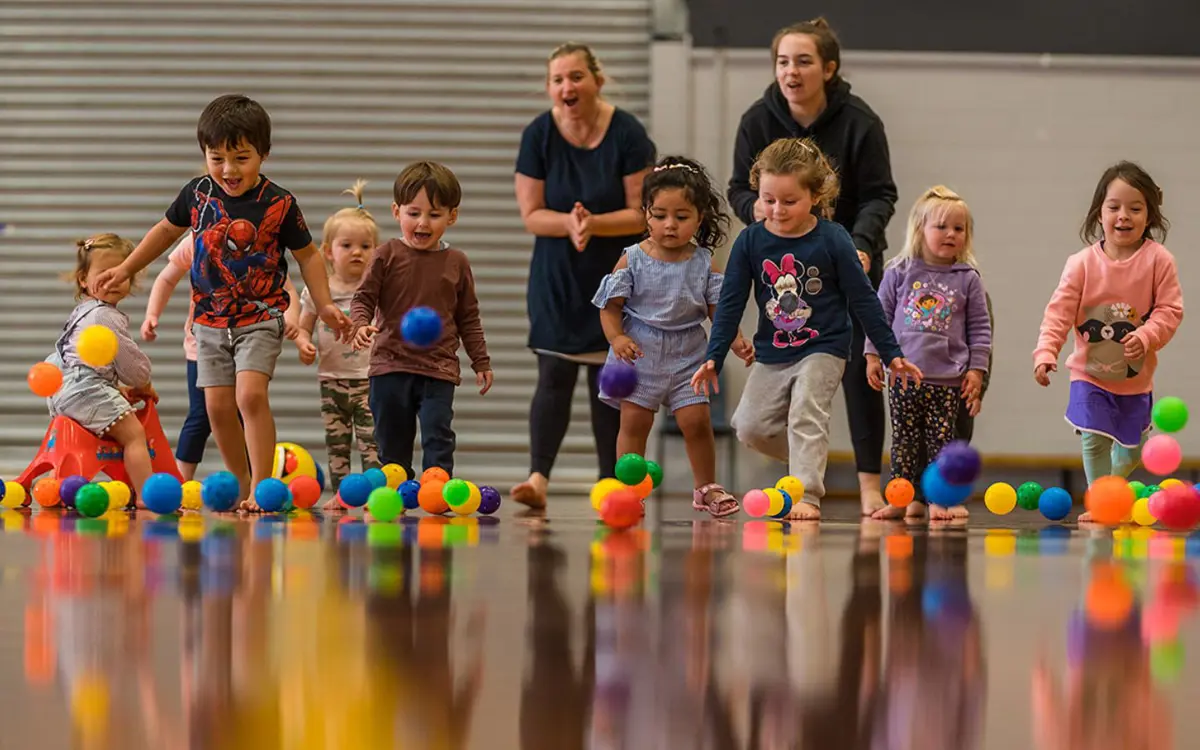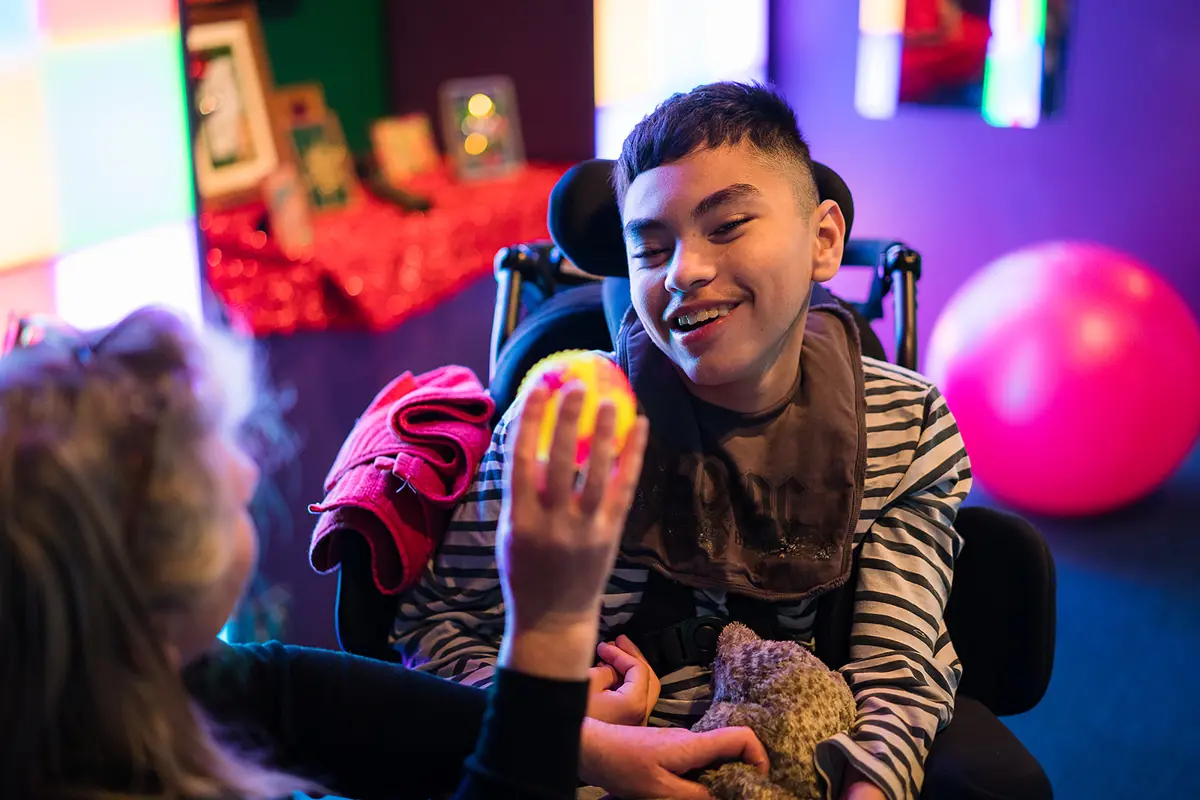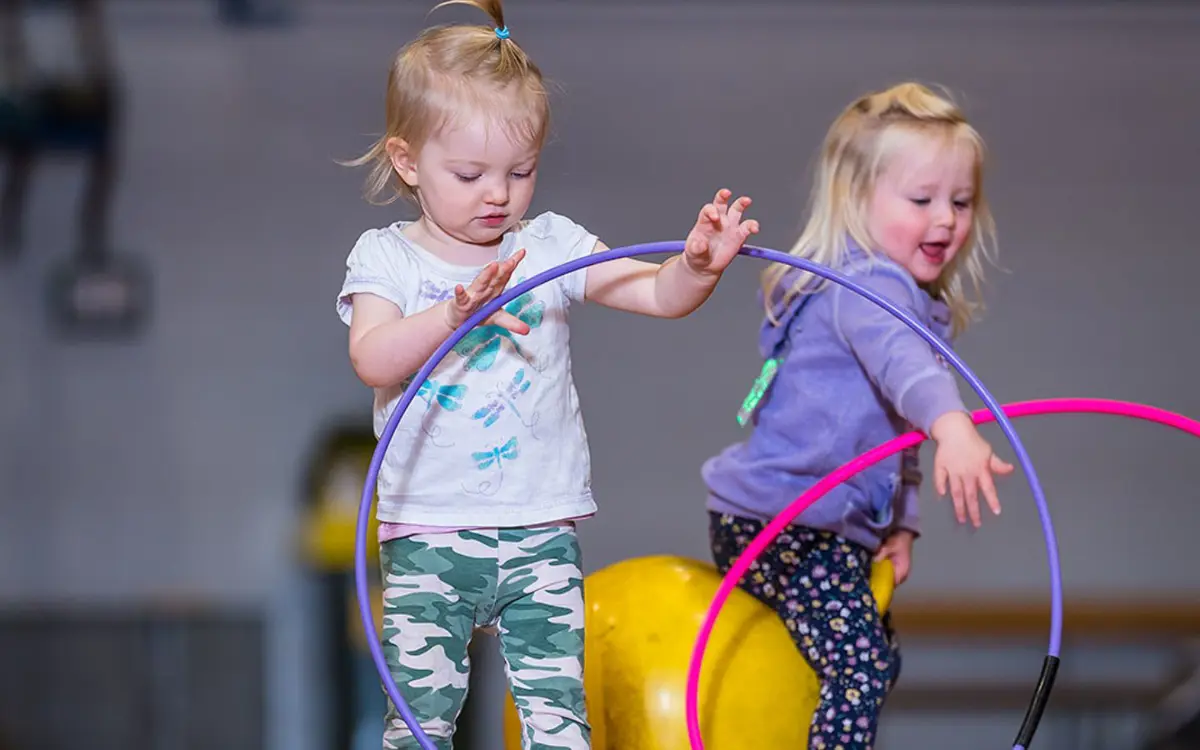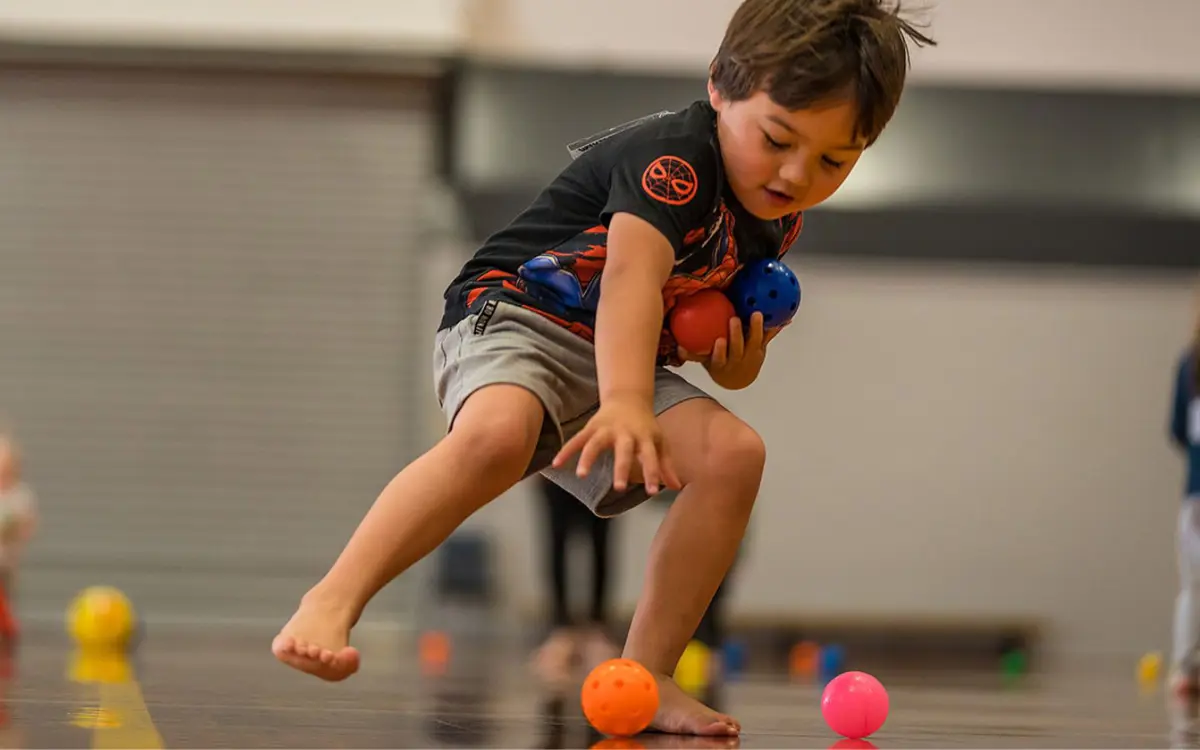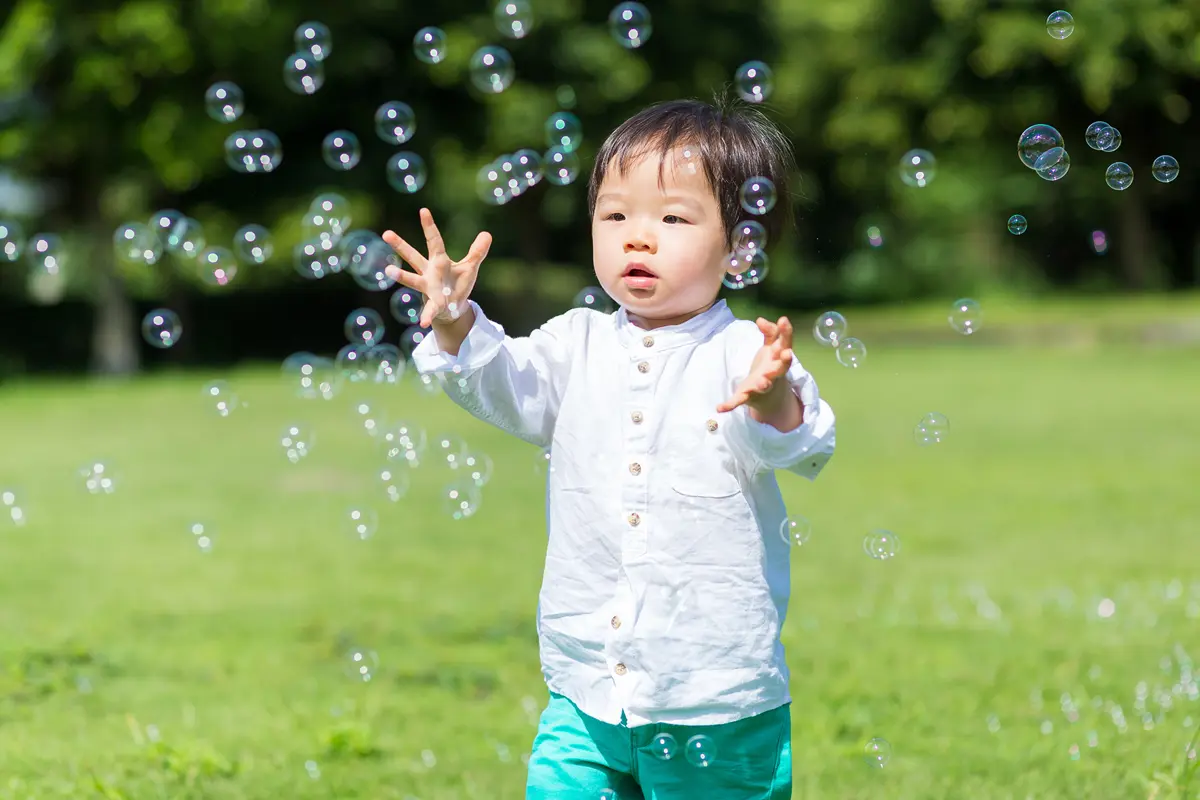-
Movement is essential in the first five years of our lives as it builds critical pathways in the brain. To help your child’s development, as well as support their mental and physical wellbeing, we’ve created a collection of fun activities you can do at home.
-
Jump around
After warming up, practise a variety of jumps with your child: two legs together, star jumps, tuck jumps with knees up to chest or straddle jumps (legs out either side).
Mix it up by taking turns to call out a jump for each other to do or use a pack of cards and assign a jump to each suit - as you turn over the cards you have to do the assigned jump.
Jumping on a soft surface, such as a trampoline or mat, will help support your joints.
Develops midlines, force and power.
Homemade beam
Build a low beam by setting up a sturdy plank on two brick foundations or simply roll up a mat, carpet or even towels, to make a homemade beam on the floor.
Ask your child to practise walking forward, backward, sidestep, bending on one knee and scooping with the other foot and turning around.
Develops balance, concentration, body and spatial awareness.
Donkey kicks
Ask your child to place both hands shoulder-width apart on the floor in front of them and then buck their feet like a mad donkey.
This can also be done on the trampoline and is a good progression for moving on towards handstands.
Develops strength, power, positioning and body awareness.
Balancing buddies
Place a toy on your child’s palm and ask them to walk with it balanced on their hand.
Too easy? Try their head, shoulder or their overturned hand. Make it harder by introducing obstacles to step over or manoeuvre around.
Develops balance, power and body awareness.
Roly-polys
Place some blankets or a mattress on the floor.
Start by asking your child to stand with their feet apart, then reach down to put their hands on the ground near their toes.
Ask them to tuck their chin to their chest and look at their stomach. Then roll gently forward. You can help support their heads and neck as they roll.
An easier alternative is practising lying on the floor arms outstretched and rolling around.
Develops balance, positioning and coordination.
Ninja feet
Clear an area and set out your pots and pans, or other noise makers such as rattles or bells, with enough space for your child to move around. Challenge them to get from one end to the other without making a sound. As they get more confident move the noise makers closer together to increase the challenge.
Develops control, balance, spatial and body awareness.
Twister
Identify sets of two different body parts and ask your child to touch them to the ground at the same time, for example their elbow and foot, or shoulder and knee.
Develops coordination, balance, flexibility and body awareness.
Gymnastics shapes
There are some key gymnastics shapes that can be practised at home.
The 'pike' is when your body is in an L position from the hips (so the arms are up straight and the legs are together straight in front of the body).
The 'straddle' is with the legs wide apart again at hip height and arms are straight out wide from shoulders.
The 'tuck' is bringing the knees into the chest and the ‘star’ shape is with the legs out wide and the hands up and out wide.
How many can your child do? You can practise these in a game of “Simon Says”.Develops body awareness, strength and balance.
